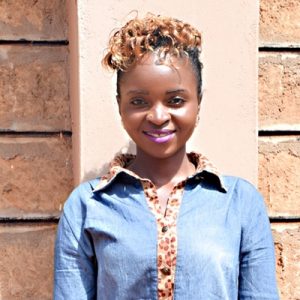Maluvyu Village is at the outskirts of Kathonzweni Town which is the administrative headquarter of the entire region. It is a rural community that is peaceful and fairly vegetative with indigenous trees crowding the unoccupied land. Residential homes in this area are a mixture of bricks and grass-thatched homes. The homesteads are very spread out.
People here make a living either as farmers or casual laborers. On an average day, community members wake up at 6 am. The women will go to fetch water and then prepare breakfast for the family as the children prepare to go to school. The men go to the farm to get Napier grass for their livestock and also prepare to work for the day. During the day, the women wash the family’s clothes, tidy up the house, wash utensils, and cook for the family.
The community has village elders and "nyumba kumi" council of elders who gather to solve any issues that may arise. Women are known to have their own gatherings for saving and contributing money.
Our main entry point into Maluvyu Community has been the Ngwatanio Ya Utui wa Maluvyu Self-Help Group, which is comprised of 52 farming households that are working together to address water and food scarcity in their region. We have worked with this group for the past three years on water projects to improve access to every household in this community.
For more than 250 people in the community, water access is getting better but there is still a need for improvement. The water from the nearest well is salty, meaning it is only suitable for feeding livestock, washing dishes, and farming.
Ending the water crisis in Maluvyu
Sand Dam
Erratic rainfall patterns can't guarantee water for communities all year round, as most rivers in Makueni County are seasonal. Sand dams would, therefore, harvest rainwater where it falls and make it available to the community for longer periods of time.
We are unified with this community to address the water shortage. As more sand dams are built, the environment will continue to transform. As the sand dams mature and build up more sand, the water tables will rise. Along with these sand dams, hand-dug wells (check out the hand-dug well being installed next to this dam) will be installed to give locals a good, safe way to access that water.
Building this sand dam at a spot on the river will bring water closer to hundreds of people. After the community picked the spot, our technical team went in and proved the viability by finding a good foundation of bedrock. Now, our engineers are busy drawing up the blueprints. We estimate the dam will be 54.9 meters long and 4.95 meters high.
With these projects, clean water will be brought closer to hundreds of people in Maluvyu Village of Kenya. That makes it possible for communities to utilize the time saved fetching water and the water in the dam for income generating activities and farm irrigation.
Training
Ngwatanio Ya Utui wa Maluvyu Self-Help Group and Maluvyu Community have participated in training sessions that teach about important hygiene practices and daily habits to establish in their homes. Taking good care of themselves and their environment will make for a healthy community.
"Our hygiene and sanitation levels have improved tremendously since the WASH (water, sanitation, and hygiene) training was conducted. Most members are practicing what we were taught; hand washing, water treatment, and compound hygiene," Ruth Mwikali said.
"I did not have a garbage pit before the training but we were taught on its importance and benefits prompting me to implement one in my home. We were also educated on the cost-effective ways of treatment."
The latrines here are cleaned often due to the easy access to water. The hygiene and sanitation levels are highly maintained with all the visited homesteads having tippy taps and washing agents installed nearby the latrines. The latrines are cleaned very well with water and soap. For the ones which have mud pit floor latrines are sprinkled with ash.
They, however, need a follow-up training on soap making and water treatment because some reported to still be drinking the water directly. This is dangerous as they may be exposed to risks of contracting waterborne diseases.

 Sand Dam
Sand Dam
 Rehabilitation Project
Rehabilitation Project
































